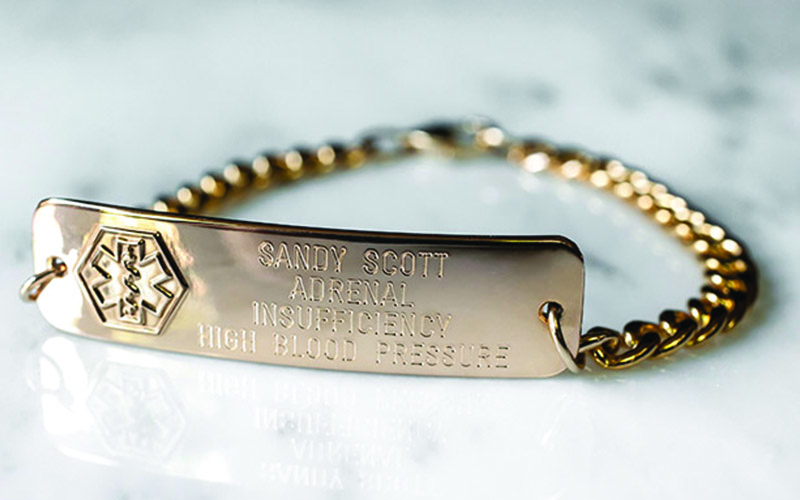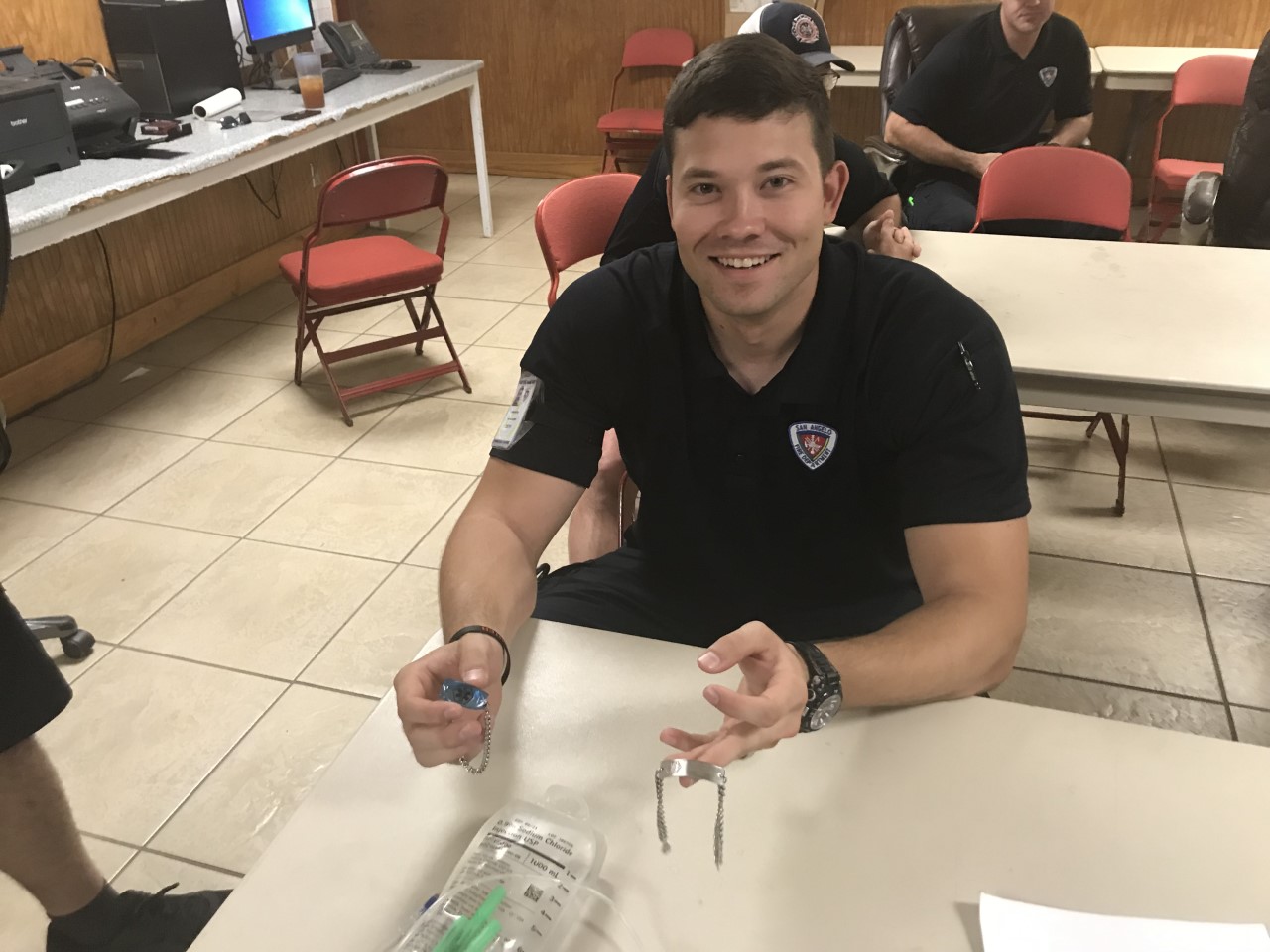Here at American Medical ID, we are proud to offer the largest variety of medical IDs in precious metals, like sterling silver, gold-filled, and even 10- and 14-karat gold. But what is the difference between all these metals and how do you know which is the right choice for you?
As the on-staff jeweler, one of the most frequent questions I get is What IS gold-filled? Offering the look and feel of karat gold, without the cost, gold-filled is made by bonding a layer of 10 karat gold to a core of base metal, usually brass or a bronze alloy.
All our gold-filled medical IDs are double-clad, meaning they have a layer of 10K gold on both the top and the bottom. We use the thickest gold layer available on the market in which 10 percent of the total weight is karat gold. Gold-filled may sound just like gold-plated, but the main difference between is the thickness of the layer(s) of gold. Gold-filled is far superior to gold-plated, which is a very thin layer of gold that will wear down much more quickly. Here’s what it looks like in an illustration (not to scale).
10K, 14K or 24K Gold
While a lot of customers enjoy the economic advantages of gold-filled, some people may be allergic to the base metal used in the core, or simply prefer to wear karat gold. What do the numbers really mean? These numbers actually represent a fraction. Pure gold—that which hasn’t been alloyed or mixed with any other metals—is 24K. It is quite soft and not suitable for most jewelry. In fact, engraving done on 24K gold would quickly wear away. To make pure gold more usable in jewelry, it is alloyed with other metals to give it strength and luster.
The numbers represent how much pure gold is in the mix. So 10K means that the item is 10/24 (or 41.7%) pure gold. 14K is 14/24 (or 58.3%) pure gold. Generally, for yellow gold, the lower the karat, the harder the metal. This means that 10K may wear better than a higher karat, but there are trade-offs. For example, the lower the karat, the more quickly the metal is likely to tarnish. (Pure 24K gold does not tarnish, part of the reason it’s so highly valued.) Like all precious metals, gold-filled does require a bit of extra care, but with proper precautions, your gold-filled ID should last you years to come.
The amount and type of alloy metals varies by manufacturer, and different countries and cultures tend to prefer an ideal amount of yellow in their gold. Some recipes are considered trade secrets and kept under lock and key! For example, 14K gold chain manufactured in Italy often has a more yellow appearance than 14K gold chain manufactured in the US, which has a more orange/golden tone.
Choosing Your Gold ID
When selecting a gold medical ID to wear, in addition to price, you’ll want to consider how often it will be worn. Will you wear this ID every day, or do you like to mix up your daily ID and pick from one of several? Although our gold-filled and gold IDs are made with quality materials, they are still precious metal jewelry that can be worn down with extended use.
If you’re looking to wear the same ID all day, every day, (one and done), you might actually want to consider one of our gold-tone stainless steel IDs. These are the most economical and the longest-wearing of all our styles. These IDs feature ion-plating, a process that evenly distributes a gold-tone titanium coating on top of durable, hypoallergenic stainless steel. Eventually, this colored coating WILL wear away, especially if it’s on a bracelet, which is more prone to wear and tear, but generally, this is a great choice if you want an affordably priced, good quality medical ID, have metal allergies, or will be wearing the ID for more strenuous daily activities. At the end of the day, the best medical ID is the one you will actually wear, so start with the one you love!






